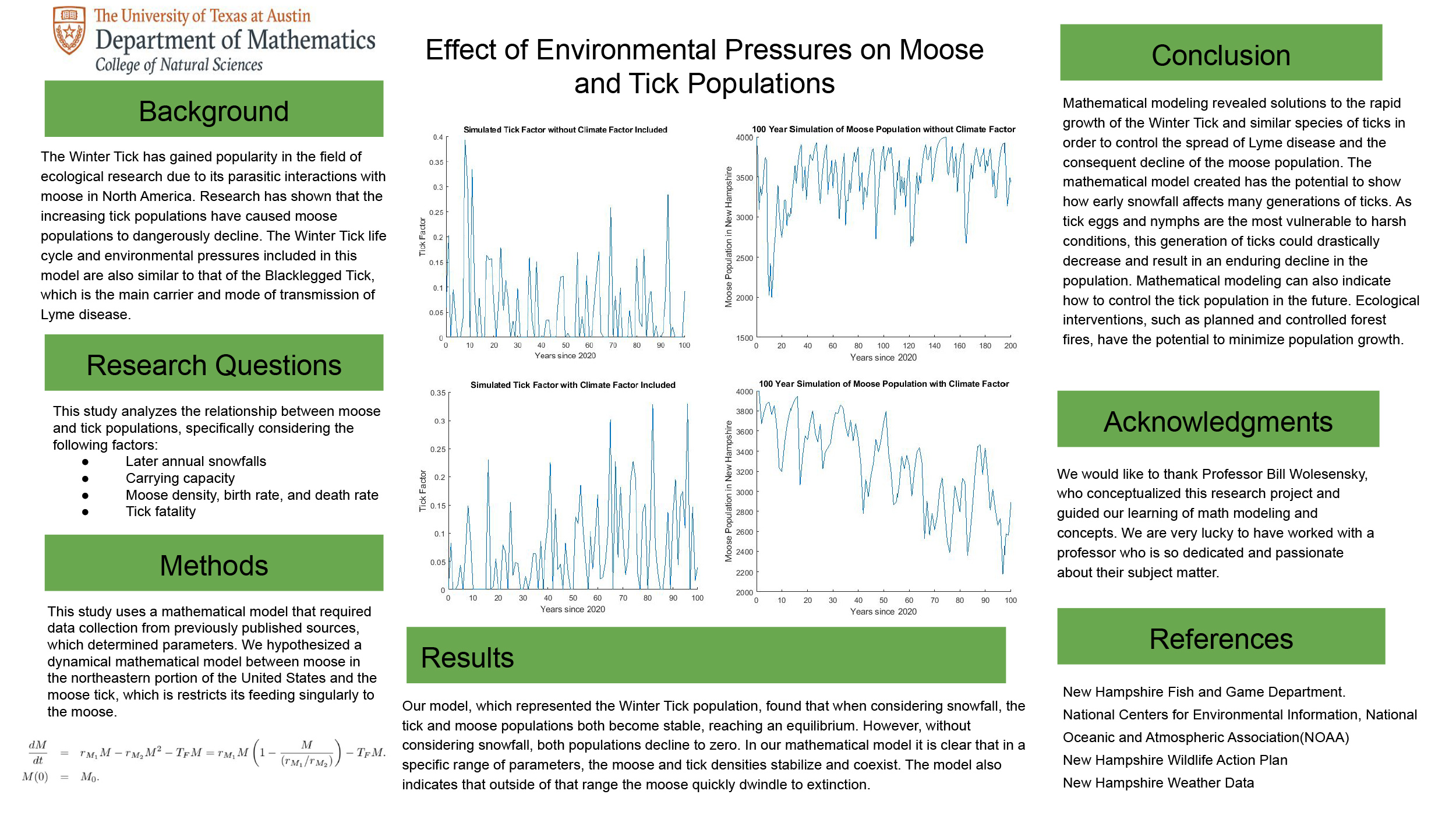Livia Frost, Diana Macias, Shyann Walker, Ayah Albustami
The Winter Tick (Dermacentor albipictus) is a species that is currently a topic of interest in the field of ecological research due to their parasitic interactions with moose North America and their ability to act as a vector for Lyme disease. Mathematical modeling through MATLAB was used to create a mathematical model that accounts for moose and tick densities and snowfall data because these factors were identified as potential influences on the tick population. The results of the model are that under specific parameters, the tick and moose populations both become stable, reaching some equilibrium. However, under any other parameters, both populations decline to zero. Mathematical modeling has the ability to reveal solutions to the rapid growth of the Winter Tick and similar species in order to control the spread of Lyme disease and the decline of the moose population.

Comments
Really interesting interdisciplinary project. I appreciate that you shared what the modeling has to say about solutions to the problem, in addition to the possible outcomes without intervention. This kind of work would seem to have value for policy discussions — have you considering venues for sharing your work? – Jeanette Herman
It’s so great to see a project that combines mathematics with an environmental modeling topic. How did you arrive at the particular topic of moose and tick populations? – Rob Reichle

